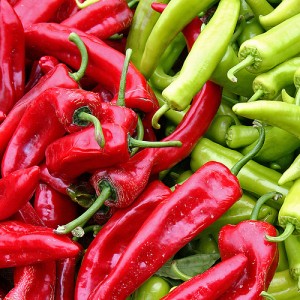 Way back in the days of youthful camping, I remember the time I woke up in the wee hours of the morning to find icicles formed inside my tent above my head. Though I was quite warm beneath my sleeping bag, I noticed my dog’s water bowl had frozen over, solid. Needless to say, I stayed inside that sleeping bag until the sun’s rays came melting its way into my tent.
Way back in the days of youthful camping, I remember the time I woke up in the wee hours of the morning to find icicles formed inside my tent above my head. Though I was quite warm beneath my sleeping bag, I noticed my dog’s water bowl had frozen over, solid. Needless to say, I stayed inside that sleeping bag until the sun’s rays came melting its way into my tent.
Today, with the winter chill safe and sound behind my front doors, I graciously sit in my cozy chair with my feet propped up on bricks circling the fireplace, toes all toasty warm. The fact that fire has granted mankind the ability to stay one step ahead of nature is not lost to me, and I muse on other ways man has conjured up to keep the blood flowing to beat the cold.
Of course the sharing of body heat heralds number one in most people’s book. Yet I’m going to skip over the ways of Kama Sutra and instead work the virtues of the humble pepper that sustains a fluttering beat or two of culinary heat.
As I sip my hot chocolate simmered earlier in vanilla bean, cinnamon and red chili pepper, I immerse in the zesty heat lacing my drink and warming my innards. The fact that this spicy little fruit, the chili pepper, can spontaneously combust a forehead into a shower of sweat with just one little bite begs for a little more insight in how and what makes it flame and why bother.
From the fairly mild Poblano to the Trinidad Scorpion Butch T, which was voted the hottest pepper in the world in 2011 (the current title is held by the Trinidad Scorpion Morouga Blend), peppers are measured in the Scoville scale.
The Schoville scale is so named from its creator, Wilbur Scoville, an American chemist, who in 1912 devised the Scoville Organoleptic Test that directly measures the capsaicinoid content of the pepper.
The main capsaicinoid is capsaicin, the stuff that burns your tastebuds (validated by pain receptor sites called nociceptors) when biting into a chili.
The scale goes from 0 to 16,000,000 million SHU (Scoville Heat Units) of pure capsaicin. For instance, the fourth hottest pepper in the world, the Naga Viper, contains 1,349,000 SHU. To put that in context, a simple Jalepeno pepper can contain up to 8,000 SHUs with a Thai pepper still a mere 100,000 SHU at its hottest.
Why are some of us addicted to the glorious burn that ignites the mouth and body into a monumental five-alarm fire? Actually capsaicin triggers the pain response when causing a burning sensation in the mouth triggering a flood of endorphins that creates a certain kind of high when eating the heat.
Endorphin effect aside, chilies have many health benefits; a partial list includes treating migraines and sinus headaches, soothing intestinal diseases, burning fat, protecting the heart, and fighting inflammation.
Loaded with Vitamin C, chilies can contain up to four times the amount found in an orange. The heat factor in the chili improves circulation and with its ability to dilate the blood vessels floods the skin with warmth curbing body chills.
Recent studies have proved eating just a little chili pepper (fresh or dried) each day helps us fall asleep and stay asleep longer. Adding a little fresh-cut chili to an evening meal may also help all those slow morning risers feel more awake the next day. The capsaicin acts on sensors in our brain which controls our sleep cycles.
Even birds know the beauty of chilies as it is one of their favorites to raid in gardens, their tiny little bodies impervious to the deleterious effects due to their receptor cells being largely insensitive to capsaicin.
And though a five-alarm chili is probably not on most people’s list, a little heat from these small fruits might be just the remedy needed to bully your way through the cold wintry months still ahead.




